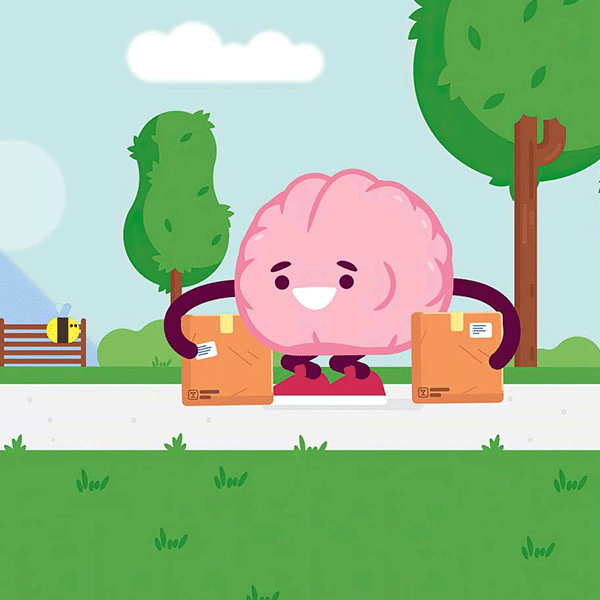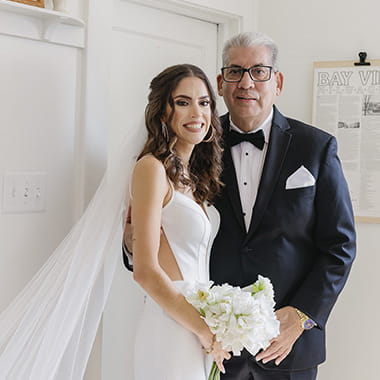Stroke Symptoms
F.A.S.T. Warning Signs of Stroke
- F = Face Drooping – Does one side of the face droop or is it numb? Ask the person to smile. Is the person's smile uneven?
- A = Arm Weakness – Is one arm weak or numb? Ask the person to raise both arms. Does one arm drift downward?
- S = Speech Difficulty – Is speech slurred?
- T = Time to call 911 – Stroke is an emergency. Every minute counts. Call 911 immediately. Note the time when any of the symptoms first appear.
Other Stroke Symptoms
- NUMBNESS or weakness of face, arm, or leg, especially on one side of the body
- CONFUSION, trouble speaking or understanding speech
- TROUBLE SEEING in one or both eyes
- TROUBLE WALKING, dizziness, loss of balance or coordination
- SEVERE HEADACHE with no known cause
The F.A.S.T. Experience

Be prepared – Learn more about the stroke warning signs and symptoms.

Un accidente o derrame cerebral ocurre cuando se bl oquea el flujo de sangre en las arterias que nutren el cerebro, o cuando ocurre un sangrado en el cerebro mismo o en las membranas que lo rodean.
Las mujeres, los hispanos y los afroamericanos en los Estados Unidos tienen mayor riesgo para el accidente o derrame cerebral.
 Stroke is the No. 5 cause of death and a leading cause of disability in the U.S.
Stroke can happen to anyone — any age, any time — and everyone needs to know the warning signs.
Stroke is the No. 5 cause of death and a leading cause of disability in the U.S.
Stroke can happen to anyone — any age, any time — and everyone needs to know the warning signs.
On average, 1.9 million brain cells die every minute that a stroke goes untreated.
Stroke is an emergency.
Call 911 immediately.
Early treatment leads to higher survival rates and lower disability rates. Calling 911 lets first responders start treatment on someone experiencing stroke symptoms before arriving at the hospital.
 Men and women who have strokes often feel similar symptoms of stroke, such as face drooping, arm weakness and speech difficulty.
Men and women who have strokes often feel similar symptoms of stroke, such as face drooping, arm weakness and speech difficulty.
Other common signs for both women and men include problems seeing out of one or both eyes and balance or coordination problems.
Women can also experience:
- General weakness
- Disorientation and confusion or memory problems
- Fatigue, nausea or vomiting
However, some signs of stroke in women can be subtle enough to be missed or brushed off. That can lead to delays in getting time-sensitive, lifesaving treatments.
Learn more about how men and women experience stroke symptoms differently
 If you’re having a stroke, it’s critical that you get medical attention right away. Immediate treatment may minimize the long-term effects of a stroke and even prevent death.
If you’re having a stroke, it’s critical that you get medical attention right away. Immediate treatment may minimize the long-term effects of a stroke and even prevent death.
Thanks to recent advances, stroke treatments and survival rates have improved greatly over the last decade.
But in order to seek treatment, you must recognize the signs and symptoms of a stroke and know what to do:
- Face drooping
- Arm difficulty
- Speech slurring
- Time to call 911
 Silent strokes are undetected strokes. They occur when a blood vessel blockage in the brain causes cells to die, but no warning signs or symptoms are obvious.
Silent strokes are undetected strokes. They occur when a blood vessel blockage in the brain causes cells to die, but no warning signs or symptoms are obvious.
About one-fourth of people over age 80 have at least one such area of tissue death, known as a "silent infarct," in the brain. The condition is more common with increasing age, and in people who smoke or have a history of vascular disease (conditions that affect your blood vessels).
Experts estimate that 10 silent strokes occur for every stroke with detectable symptoms. Despite being called "silent," these infarcts have been linked to subtle problems in a person's movement and mental processing. They also are linked to future risk for stroke and dementia.
Silent infarcts can be seen in patients through advanced brain imaging techniques such as MRI and CT.
Learn more about the effect of stroke Posterior circulations strokes (a stroke that occurs in the back part of the brain) occur when a blood vessel in the back part of the brain is blocked, causing the death of brain cells (called an infarction) in the area of the blocked blood vessel.
Posterior circulations strokes (a stroke that occurs in the back part of the brain) occur when a blood vessel in the back part of the brain is blocked, causing the death of brain cells (called an infarction) in the area of the blocked blood vessel.
This type of stroke can also be caused by a ruptured blood vessel in the back part of the brain. When this type of stroke happens, several symptoms occur and they can be very different than the symptoms that occur in the blood circulation to the front part of the brain (called anterior circulation strokes).
Symptoms include:
- Vertigo, sensation like the room is spinning Imbalance or one-sided arm or leg weakness
- Slurred speech or difficulty in speech (dysarthria)
- Double vision or other vision problems
- A headache Nausea and/or vomiting
 A transient ischemic attack (TIA) is a warning stroke, but is commonly referred to by the public as a mini-stroke.
A transient ischemic attack (TIA) is a warning stroke, but is commonly referred to by the public as a mini-stroke.
TIA is a medical emergency with the same symptoms as ischemic and hemorrhagic strokes. Because most TIA symptoms last from only a few minutes up to 24 hours, they are often dismissed and not taken seriously.
TIAs, which occur before about 15% of strokes, are considered "warning strokes" — they are associated with additional TIAs, full-blown strokes or other cardiovascular problems later. Most of these later health problems happen within just days or weeks of the TIA, so early interventions to reduce risk are vital.
Remember "F.A.S.T." to know when to call for help:
- F = Face drooping
- A = Arm weakness
- S = Speech difficulty
- T = Time to call 911
If you or someone with you is experiencing these or other stroke symptoms, urgent medical evaluation and treatment are needed. Check the time so you'll know when the first symptoms appeared.
Call 911 even if the symptoms go away.
Learn more about diagnosing and treating and preventing another TIA or severe stroke

Stroke Survivor Story: Manuel Vera
Experiencing face drooping—a stroke symptom—his ischemic stroke came “out of the blue.” Recognizing that he was having a stroke prompted a trip to the ER. Manuel’s unexpected stroke resulted in good outcomes as his rehab team helped him reach a big goal.
R.Á.P.I.D.O. Copyright ©2024, The University of Texas Health Science Center at Houston. All rights reserved.